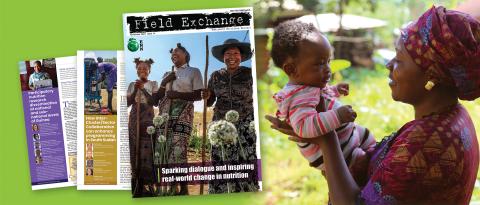Assessing nutrition-friendly school initiatives in rural Sindh, Pakistan
This is a summary of the following paper: Samnani A, Nuruddin R, Petrucka P et al (2024) Assessment of preschool preparedness intervention package on adoption of nutrition friendly school initiative in rural Sindh, Pakistan: a pre-and post-intervention design. Frontiers in Nutrition, 11, 1395883. https://doi.org/10.3389/fnut.2024.1395883
The school environment plays a crucial role in shaping nutrition-related behaviours. In 1995, the World Health Organization initiated the Global School Health Initiative, inspired by the 1986 Ottawa Charter for Health Promotion, to globally advance the ‘health promoting school’ approach. This initiative aims to enhance the health of children and their communities through school-based interventions.
The study reported on in this paper employed a pre-post intervention design to evaluate preschool preparedness for adopting the Nutrition-Friendly Schools Initiative checklist. The study assessed 164 preschool children aged 2-7 years and their caregivers using anthropometric measures and a cross-sectional method. The intervention included forming a school community, creating a health manual, drafting a nutrition policy, and caregiver awareness raising. Outcomes measured included changes in preschool preparedness (using the Nutrition-Friendly Schools Initiative checklist), caregiver knowledge, and various anthropometric indicators (mid-upper arm circumference, height, weight, and their respective z-scores).
At baseline, the preschool preparedness score was 10 out of 26 indicators, with four indicators considered not applicable. By the endline assessment, the score improved to 22 out of 26, reflecting a 12-point increase and demonstrating significant enhancement in preschool preparedness for the Nutrition-Friendly Schools Initiative.
The programme to increase caregivers’ awareness of health and nutrition-promoting behaviours showed significant improvement in levels of awareness. Mean test scores at baseline averaged 12.6 (50.4%) and rose to 19.8 (79.1%) at endline, representing a 7.2-point increase in knowledge among the 84 (51.2%) caregivers who participated. Caregivers of boys had a greater increase (8.3 points) compared to caregivers of girls (5.2 points), with significant knowledge gains across all gender and age groups.
Anthropometric data revealed significant improvements in mid-upper arm circumference, height-for-age z-scores, and weight-for-age z-scores, especially in children aged under five years and girls. Weight-for-height z-scores and body mass index-for-age z-scores improved more in children aged five and above and boys. At the endline assessment, stunting (7.3%) and overweight/obesity (4.3%) prevalence remained unchanged. However, there were reductions in underweight (from 10.4 to 7.3%) and wasting (from 7.9 to 6.1%).
Limitations of the study include the lack of a control group, which affects internal validity, and the focus on private schools, potentially limiting the generalisability of the findings to public school settings.
Overall, the Nutrition-Friendly Schools Initiative implementation significantly improved preschool preparedness and caregiver knowledge on nutrition, with some improvements in anthropometric outcomes. This initiative highlights the potential of public-private partnerships in tackling malnutrition. The findings suggest potential for replicating the model in public schools, establishing a Nutrition-Friendly School accreditation programme, and developing a National School Nutrition Policy. Future research should explore diverse settings to comprehensively assess the intervention’s impact.
Editors’ note: This is a summary of a paper that is based on a PhD thesis. We encourage all students to submit an abstract of their research to Field Exchange for inclusion as an original article or for summarisation in a Field Exchange research snapshot.


